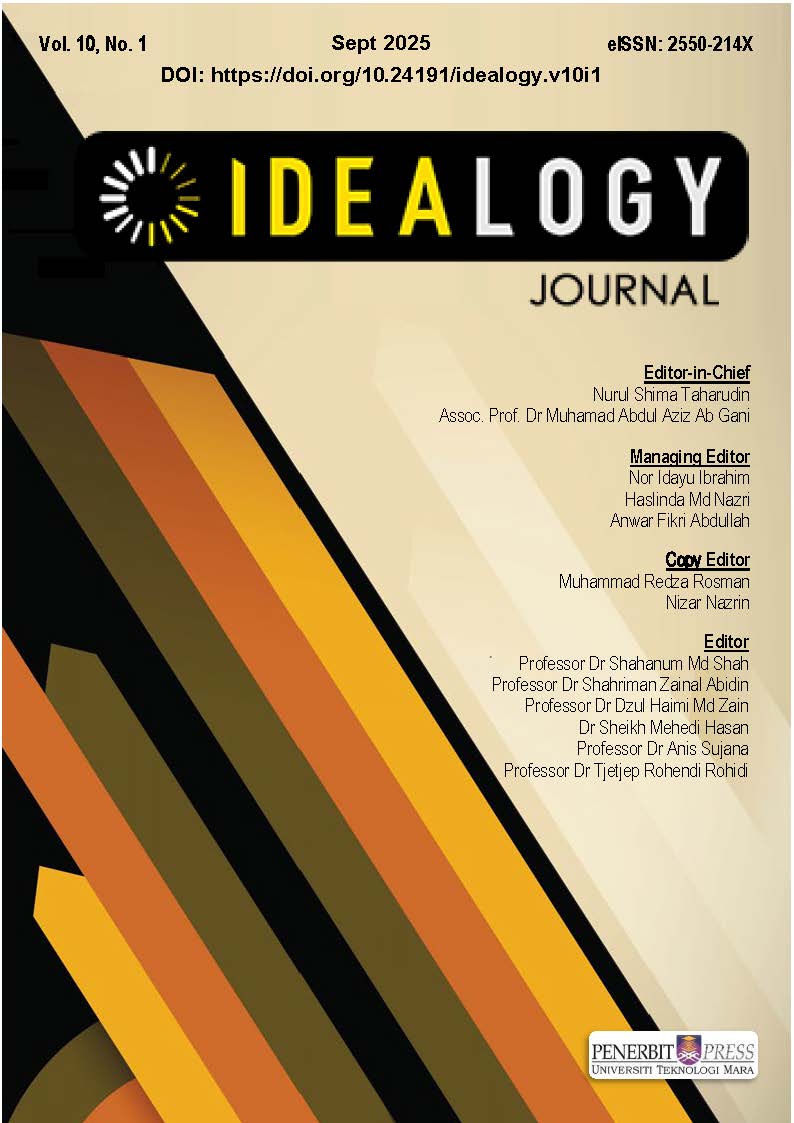Bridging the Gap: The Role of the 'ART'UISM Program' in Enhancing Cognitive Abilities and Community Acceptance for Children with Autism
DOI:
https://doi.org/10.24191/idealogy.v10i1.714Keywords:
Autism Spectrum Disorder (ASD), Community Program, Learning Skill and Community Acceptance, Program ImpactAbstract
This study evaluates the effectiveness of the 'ART'UISM: In the course of my 'Artistic -Intuition- Autism Program’, impairing creative expression and cognitive development in children with autism. This program has been designed to promote art as an activity and further raise the handicapped kids' psychomotor and cognitive skills. Pre and post-survey questionnaires were given to parents/family members to measure the success of our program. The study group of children includes 18 who suffer from Autism. We have concluded that there are important repercussions in terms of color identification, shape recognition, attention, task completion, acquisition and learning of new activities, self-confidence, and emotional regulation. The environment created by the program allowed each trainee to feel safe and respected, encouraging their creative part. Make a prediction, using the atmospheric conditions you have encountered or observed. Then, write a measurement plan to predict and describe the rate of wind speed change over time in that area. Based on the results mentioned above, one can see that art therapy can bring the possibilities of the multifaceted development of children diagnosed with autism and may affect society’s outlook.
Keywords: Autism Spectrum Disorder (ASD), Community Program, Learning Skill and Community Acceptance, Program Impact
References
American Psychiatric Association. (2013). Diagnostic and statistical manual of mental disorders (5th ed.). https://doi.org/10.1176/appi.books.9780890425596
Chu, V., Lim, C., Park, J., Yu, J., Garcia-Barrera, M., & Moore, D. (2021). Trends in art therapy for autism spectrum disorder: A systematic qualitative review. Frontiers in Psychology, 12, 618917. https://doi.org/10.3389/fpsyg.2021.618917
Drake, J. E. (2018). Instructional strategies for developing visual literacy skills and promoting creative thinking with young children. Art Education, 71(2), 26-35. https://doi.org/10.1080/00043125.2018.1436329
Emery, M. J. (2004). Art therapy as an intervention for autism. Art Therapy, 21(3), 143-147. https://doi.org/10.1080/07421656.2004.10129496
Epp, K. (2008). Outcome-based evaluation of a social skills program using art therapy and group therapy for children on the autistic spectrum. Children & Schools, 30(1), 27-36. https://doi.org/10.1093/cs/30.1.27
Humphrey, N., & Lewis, S. (2008). 'Make me normal': The views and experiences of pupils on the autistic spectrum in mainstream secondary schools. Autism, 12(1), 23-46. https://doi.org/10.1177/1362361307085267
Martin, N. (2009). Art therapy and autism: Overview and recommendations. Art Therapy, 26(4), 187-190. https://doi.org/10.1080/07421656.2009.10129616
Safar, A. H., & Siraj, S. (2020). Art-based intervention for children with autism spectrum disorder: A systematic review of the literature. Journal of Autism and Developmental Disorders, 50(8), 2671-2686. https://doi.org/10.1007/s10803-020-04399-5
Symes, W., & Humphrey, N. (2011). The deployment, formation and integration of teacher assistants in schools. Educational Review, 63(3), 299-315. https://doi.org/10.1080/00131911.2011.560248
Downloads
Published
Issue
Section
License
Copyright (c) 2025 Idealogy Journal

This work is licensed under a Creative Commons Attribution-NonCommercial-NoDerivatives 4.0 International License.
UiTM Press (the Publisher) has agreed to publish the undersigned author’s paper in Idealogy Journal. The agreement is contingent upon the fulfilment of a number of requirements listed below.
1. The undersigned author warrants that the paper entitled below is original, that it is not in any way libellous or unlawful in Malaysia, that it does not infringe any copyright or other proprietary right. The undersigned hereby represents and warrants that he/she is the author of the paper, except for material that is clearly identified as to its original source, with permission notices from the copyright owners where required. The undersigned represents that he/she has the power and authority to sign and execute this agreement.
2. The undersigned author warrants that the paper entitled below has not been published elsewhere, and also it will not be submitted anywhere else for publication prior to acceptance/rejection by this Journal.
3. By submitting the paper entitled below, the undersigned author agrees to transfer the rights to publish and distribute the paper in an international e-journal (entitled above) to Publisher.
4. The undersigned author agrees to make a reasonable effort to conform to Publisher's submission guidelines and to liaise with the editor to ensure that the requirements of these guidelines are met to a reasonable degree.
5. The corresponding author signs for and accepts responsibility for releasing this material on behalf of any and all coauthors. This agreement is to be signed by at least one of the authors who has obtained the assent of the co-author(s) where applicable. After submission of this agreement signed by the corresponding author, changes of authorship or in the order of the authors listed will not be accepted.


